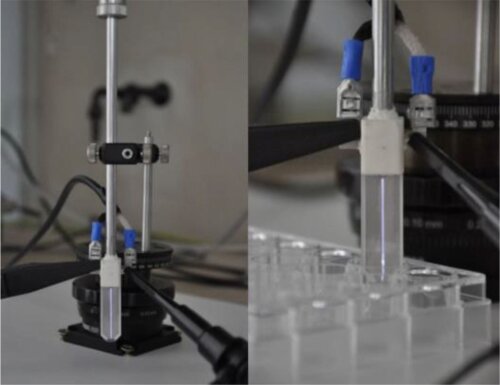The use of plasma for various medical applications, i.e., so-called “plasma medicine”, is gaining increasing interest, e.g., for sterilisation and decontamination purposes, for wound healing, the treatment of skin diseases, dental cavities, etc. In recent years, a lot of attention goes to cancer treatment, where promising results have been obtained already, both in vitro and in vivo. Plasma appears to be able to attack a wide variety of cancer cells, without damaging healthy cells. The two most commonly used plasma sources for this purpose are a plasma jet and dielectric barrier discharge (DBD) plasma. We study the chemistry in an argon plasma jet expanding in humid air, as well as DBD plasmas, in contact with liquid medium, by means of chemical kinetics and fluid dynamics modelling, to elucidate which plasma species are important for biomedical applications, i.e., mainly reactive oxygen species (ROS) and reactive nitrogen species (RNS). We have also studied the interaction of ROS with bacterial cell wall components to better understand the atomic-scale mechanisms of bacteria killing (for plasma-based sterilisation, but also for wound treatment, dental treatment, etc). Currently we are mainly focussing on plasma for cancer treatment, studying the interaction of ROS (and RNS) with various components in human cells, like DNA, proteins, and phospholipids in the plasma membrane of cells, to understand (among others) whether and how ROS (and RNS) can penetrate through the membrane and enter the cell, and/or give rise to phospholipid (per)oxidation and pore formation in the membrane. In addition, we study the effect of plasma oxidation on the function and structure of various proteins, important for cancer treatment, including immunotherapy. Last but not least, we are also doing experiments on plasma treatment of various types of cancer cells. We mainly focus on melanoma, glioblastoma, pancreatic cancer and head and neck cancer. We perform in-vitro experiments (in 2D cell cultures, but also in 3D models, that are closer to real tumors, like spheroids and organoids, as well as the in-ovo model, and we also perform in-vivo experiments. These experiments are, in collaboration with CORE (E. Smits, Oncology, Faculty of Medicine and Health Care).
